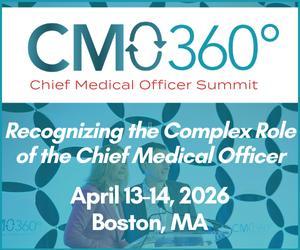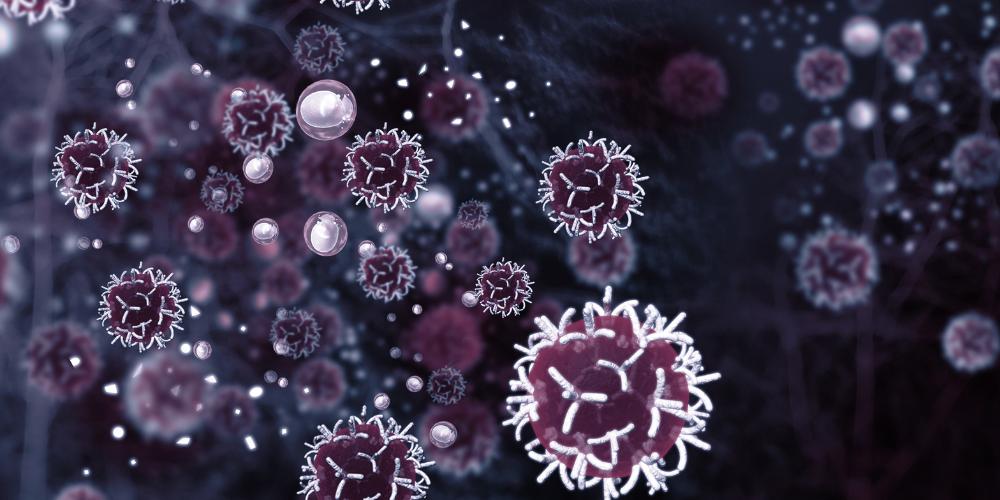BMS on Managing IO Operations and Sparking Joy for Science in Young People
BMS' Chétna Rao, PhD, talks about her role in site strategy and operations, as well as boosting STEM awareness for young students. Dr Rao serves as Head of Site Strategy and Operations for BMS' Redwood City and San Francisco sites.

What is the work you’re leading at Bristol Myers Squibb?
I head the site strategy and operations in the Redwood City and San Francisco sites. In my role, I manage multiple functional areas, which include operational effectiveness by leveraging resources to allow science to operate in a more streamlined and innovative manner and removing barriers and tasks that prohibit scientists from spending more time in the labs. My job boils down to letting the scientists focus on the science because I can handle everything else.
Being a bench scientist in my previous role, I didn’t realize the important work that materialized in the background where I could do uninterrupted science. Now, from an operations perspective, forecasting the needs of the scientists ahead of time is the key. To me, sometimes it becomes a little easier because I know the journey of a scientist and a project, so I can anticipate what the needs are in advance.
How did you transition from your role as a scientist into your position now?
I’ve been working with oncology since 1999, when I joined my first start-up company. I attended university in India up to a master’s level. I came to California for my PhD program, did my postdoc and became a career research scientist. I had all these patents, and I brought three medicines to market. But in 2018, I actually stepped back. When this opportunity came through, I thought this change would actually help me provide others the ability to pursue education much like the opportunities I’ve been given. I changed positions and started seeing the site operations, and started honing in on my passion, which is the emphasis on furthering STEM education.
"When I first started thinking about STEM, I felt we needed to look at the local environment, within our backyard."
How did the pandemic impact how you approach your work?
During the pandemic, this has been extremely challenging. I spearheaded the return-to-office initiative for both of the sites; and it was key to understand the project priority needs. This is a discovery site, so we may start with 20 projects, and two of them move into the clinic. But with those 20 projects, what are the priorities? What are the needs of the scientists?
To bring them back to work in a safe environment was challenging. From an operations perspective, to figure out the little things, it has to be a well-oiled machine. We can’t have scientists crowding in labs, but they still want to do their experiments. Trying to figure out how to keep that momentum going, despite the pandemic, was a learning experience for me and our teams.
I’ve lost my sleep over this sometimes, trying to figure out how we can get everybody together, and still keep the research moving forward so that our patients can benefit. And this has allowed the opportunity to rethink what our business continuity plan should be. Because the pandemic has taught me that: we need a plan. If this happens again, what is our plan going forward? That to me, was the biggest opportunity from an operations point of view.
Can you tell me about your role leading the R&D STEM Council?
The BMS R&D STEM Council aims to amplify and advance the company’s commitment to educating the next generation of STEM leaders. I spearhead all of the company’s efforts in the Bay Area, where we are providing access to opportunities in education for students, especially in historically excluded communities, all the way from kindergarten to graduate school.
Under my leadership, BMS has helped schools in underrepresented areas to understand the importance of science on our society. Especially in the wake of the pandemic, it’s been a little difficult for people who have been historically excluded. During my time here, I’ve been instrumental in helping grow the BMS presence in the Bay Area, in terms of the expansion of the Redwood City campus, as well as the integration of the San Francisco site following BMS’ acquisition of integrated Celgene.
Can you describe the STEM programs you’re leading in the Bay Area?
When I first started thinking about STEM, I felt we
needed to look at the local environment, within our
backyard. It’s very critical to expose young students
to STEM and also provide role models so that you
can empower them in a STEM career. And the only
way we could do that was to provide these learning
opportunities through various programs, where they
can see what science is all about and hone their skills.
As an example, there is a small middle school just a stone’s throw away. It is 98% Latino students, and they had not had much exposure to STEM. I reached out to the principal and asked what we could do. From there, we put up a robotics lab where students applied their skills in coding and making these little robots. They were really excited about it, to the extent the science teacher said, “I’ve never seen students so quiet in any class.”
We also took some of our scientists who are women and who spoke Spanish to the students, to say, “This is what we are doing as our career.” When kids see role models, it makes a much bigger impact. That really ignited their curiosity and their passion for science.
We also partnered with a Black Excellence in STEM program at San Francisco State University. BMS provides funding to Black students for their undergraduate programs, and now some of them have graduated and moved on to PhD programs at different universities. We have multiple organizations we are supporting, and they’re all grassroots, which gives us an opportunity to actually connect with these students, as well.
"You have to practice humility. It’s very important because as scientists we can get carried away with what we’re doing. It’s game-changing, but practicing humility is extremely important."
How have you seen immunotherapy in oncology evolve since your involvement in its early phases?
It’s a world of difference. When I started working in oncology immunotherapy, around 2001/2002, there was no translational work. We went with almost a gut feeling of how things were going to work. We had great collaborations with academic institutions where they had done a lot of the basic research. We understood that harnessing the immune system was going to give us something. We ran mouse models. We did preclinical studies. We did clinical studies, and it worked.
We did not go in blind, because we understood the pathway. But knowing now how people living with serious diseases are responding or not, as well as how translational pieces and artificial intelligence (AI) are coming into place, creates the ideal combination of high-tech and biotech. Using, for example, AI, we can understand which patients may respond to a treatment, or not.
We didn’t have that information when I was doing basic research. And I’m not an immunologist; I’m a protein chemist. I generated molecules that were required by the immunologist to test. It is truly a different world, because we understand things a lot more now than we did back then. I don’t think we have the full picture yet, but we’re getting close to it.
Knowing which patients are going to respond based on their genetic makeup, depending on what gene they are expressing, from a translational perspective, is a game changer. That wasn’t available to us then, but it’s available now. The immuno-oncology field is definitely changing towards something better, which is really going to benefit patients in the future.
Is there a piece of advice you often circle back to over the course of your career?
As you mature, you look at things a lot differently. When I was a young scientist, I was all energy – and I still am – but over the years, I’ve had some really good managers and leaders to look up to and emulate their qualities. And one of the things that I’ve learned is, on a day-to-day basis, you have to practice humility. It’s very important because as scientists we can get carried away with what we’re doing. It’s game-changing, but practicing humility is extremely important.
Another piece of advice is never stop learning from anyone you meet, no matter how long you’ve been in this industry. Especially in our field, there’s always something you can learn and strive to achieve. I always say, “If you learn something new every day, that day is a good day.” If you shut yourself from developing your skills and knowledge, you’ll quickly fall behind.
To hear Dr Rao speak about achieving diversity and inclusion in clinical research, click here.
To learn more about IO360º Summit, click here.









